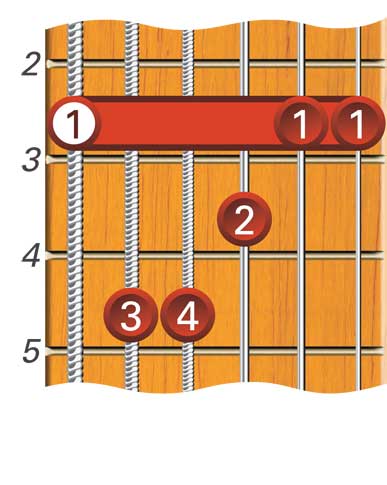
Changing Bar Chords
As you change from one Tool six Major bar chord to another do not lift your Fingers off the strings. It is only necessary to release the pressure in the left hand and maintain the shape of the bar chord as you change to the next position.


Study the following chord diagrams. These are all the root six bar chords used in Examples 1 - 5.







Example 1 consists of two bars of A (5th fret) and two bars of G (3rd fret). A basic rhythm of four down-strums to a bar is used to assist with the changing of the chords.

The next example is an eight bar progression using F (1st fret), G (3rd fret), Bb (6th fret) and C (8th fret). A basic rhythm counted 1 & 2 & 3,4, is used.

Example 3 introduces the chords Ftt (2nd fret) and B (7th fret). A basic syncopated rhythm is used.

Extra care is needed with Example 4 as a chord change occurs every bar. This time a triplet rhythm is used. Note: Use your 2nd, 3rd and 4th fingers for the basic E chord. This will assist with changing to the F# chord.

The last example in this lesson requires changing to chords on the up-strum. This example should be practiced slowly at first until you become comfortable with the chord changes.
